Ever wonder why a dip in the pool feels so refreshing, yet somehow also energizing? If you’re over 60 and looking for a fun, joint‑friendly way to stay fit, you’re in the right place. In the next few minutes I’ll walk you through everything you need to know about aquatic exercises seniors can do—why they work, how to start safely, and a handful of easy‑to‑follow moves that you can try tomorrow. Grab a towel, settle in, and let’s get splashing!
Why Consider Water Workouts
Water isn’t just for swimming laps or cooling off on a hot day. It’s a natural gym that offers buoyancy, resistance, and temperature control all in one. For seniors, that translates into a gentle environment where you can build strength, balance, and confidence without the jarring impact of hard surfaces.
What’s the core benefit of “low‑impact” water exercise?
When you’re waist‑deep, the water supports up to 90 % of your body weight. That means your joints—especially knees, hips, and spine—feel a fraction of the load they would on land. According to Hydroworx research, this buoyancy reduces joint compression, eases pain, and lets you move more freely.
How does water improve balance and reduce fall risk?
Ever tried walking on a moving sidewalk? The water’s gentle push forces you to engage core muscles to stay steady. Physical therapist Pamela Bartlo notes that this constant micro‑adjustment “significantly improves balance and lowers the chance of falls” for older adults.
Can aquatic exercise boost heart health and metabolism?
The resistance of water makes the heart work a bit harder, which improves cardiovascular fitness. A study from Downers Grove Healthcare shows that regular senior pool workouts raise heart rate, enhance endurance, and even help with weight management—a triple win for heart health.
Getting Started Safely
Before you sprint into the deep end, let’s make sure you’re set up for success. Think of this section as a friendly checklist you’d share with a neighbor over coffee.
What medical clearances should seniors get?
- Talk to your primary care doctor, especially if you have heart disease, uncontrolled hypertension, or severe osteoporosis.
- Ask about any medications that might affect balance (e.g., blood pressure meds).
- If you have chronic conditions like arthritis or COPD, request a tailored activity plan.
What pool depth & temperature are optimal?
Waist‑deep (around 4 feet) works for most moves; chest‑deep (5‑6 feet) adds a challenge for cardio. Warm water—about 30‑33 °C (86‑91 °F)—keeps muscles relaxed and joints comfortable, a key factor in the benefits aquatic exercise for seniors.
Do I need special equipment?
Not much—just a few basics:
- Water‑resistant dumbbells (1‑2 lb) for upper‑body work.
- A pool noodle or foam kickboard for balance.
- Non‑slip shoes or water sandals for safety on the pool deck.
- A flotation belt if you’re nervous about staying afloat.
Effective Aquatic Routines
Now that you’re ready, let’s dive into the fun part: actual exercises. Below are three categories that together give you a well‑rounded senior pool workout.
Water‑Aerobics for Seniors
Think of these as the pool’s version of a dance class—rhythmic, upbeat, and great for socializing. You don’t need to be a professional swimmer; a simple “march in place” does the trick.
Sample 30‑Minute Class Flow
- Warm‑up (5 min): Gentle marching, arm circles, shoulder rolls.
- Cardio Circuit (10 min): Side‑stepping, water jacks, and light jogging.
- Strength Stations (10 min): Water weights for bicep curls, leg presses using the pool edge.
- Cool‑down (5 min): Slow walking, deep breathing, and stretching.
Stories like the Aquadettes—a seniors‑only synchronized swimming team—show how water aerobics seniors can build community while staying fit (AgingCare).
Strength‑Building in the Pool
Resistance in water works in every direction, so you get a full‑body workout without bulky machines.
Upper‑Body Moves
- Arm Circles with Dumbbells: 20‑seconds forward, 20‑seconds backward.
- Water Push‑Downs: Press your forearms down against the water, like a shallow “press” exercise.
Lower‑Body Moves
- Aqua Lunges: Step one foot forward, keep the other bent; water adds resistance.
- Calf Raises on Edge: Hold the pool rail, rise onto toes, lower slowly.
Progress by adding hand or ankle weights, or by moving to deeper water where your body works harder to stay upright.
Flexibility & Balance Drills
Stretching in warm water feels like a gentle hug for your muscles, and the buoyancy lets you achieve a greater range of motion.
Neck & Shoulder Stretches
Hold each stretch for 20‑30 seconds, repeat three times. Medical News Today recommends these for improved joint mobility.
Hip & Hamstring Slides
Slide one foot forward, keep the other stationary, feel the stretch in the back of the thigh. Switch legs.
Single‑Leg Balance
Place a pool noodle under one foot, lift the other, and hold for 10‑15 seconds. This trains the core and improves proprioception.
Cardio Options
If you love a good sweat, try these water‑friendly heart‑pumps.
- Aqua Walking/Jogging: Start with a brisk walk, add short jog intervals as stamina grows.
- Kickboard Sprints: Hold a kickboard, push forward with quick leg kicks.
- Interval Training: 1 minute fast‑pace, 1 minute gentle recovery—repeat 5‑8 times.
Real World Success
Numbers are great, but real stories make the benefits feel tangible.
Case Study: The Aquadettes
Meet Margo Bouer, a 75‑year‑old former nurse who joined a seniors‑only synchronized swimming team. “The water gave me a sense of freedom I hadn’t felt in years,” she says. Their group not only improves physical health but also combats loneliness—a reminder that socialization is a hidden benefit of group water classes.
Physical‑Therapist Perspective
Dr. Katie Landier, PT, notes that after a 12‑week aquatic program, her patients showed a 25 % increase in gait speed and a 30 % reduction in fall risk. “The water’s resistance forces the muscles to work harder while protecting the joints,” she explains.
User Testimonial Prompt
What’s your favorite water move? Drop a comment below—we love hearing how you make a splash in your routine!
Design Your Personal Plan
Ready to turn ideas into habit? Here’s a simple roadmap you can adapt.
How many sessions per week?
For most seniors, 2‑3 sessions of 30‑45 minutes each strike the perfect balance between progress and recovery. Think of it as a “water‑fit” schedule you can slot between grocery trips and garden work.
How to track progress safely?
Keep a small notebook (or phone note) with three columns:
- Duration – minutes you spent in the pool.
- RPE (Rate of Perceived Exertion) – a 1‑10 scale of how hard you felt.
- Balance Score – e.g., “Can stand on one foot for 10 seconds?”
When to modify or stop an exercise?
Listen to your body. Stop immediately if you feel:
- Dizziness or light‑headedness.
- Sharp chest pain or excessive shortness of breath.
- Joint swelling that didn’t exist before.
Potential Risks & Mitigation
No activity is risk‑free, but knowing the pitfalls helps you avoid them.
Common injuries in the pool
- Slips on the deck – wear non‑slip shoes.
- Ear infections – dry ears thoroughly after each session.
- Skin irritation from chlorine – rinse off and moisturize.
How to choose a qualified instructor?
Look for certifications such as APTA Aquatic Specialist, or instructors who have experience teaching senior pool workouts. A quick chat about their training background can give you peace of mind.
Adaptations for limited mobility
Even a wheelchair can join the fun. Many community pools offer seated water aerobics or shallow‑water lifts that let you stay immersed while seated, keeping the resistance benefits without the need to stand.
Conclusion
There’s something magical about moving through water—it cushions your joints, challenges your heart, and lifts your spirit. Aquatic exercises seniors can enjoy are not only effective; they’re also social, adaptable, and downright enjoyable. By starting slowly, listening to your body, and mixing cardio, strength, and flexibility moves, you’ll build a routine that keeps you strong, balanced, and confident for years to come.
Why not try a simple water walk tomorrow? Just five minutes of gentle marching in waist‑deep water can spark a chain reaction of wellbeing. And when you feel the difference, share it with a friend—or better yet, invite them to join you. After all, the best workouts are the ones we can enjoy together.

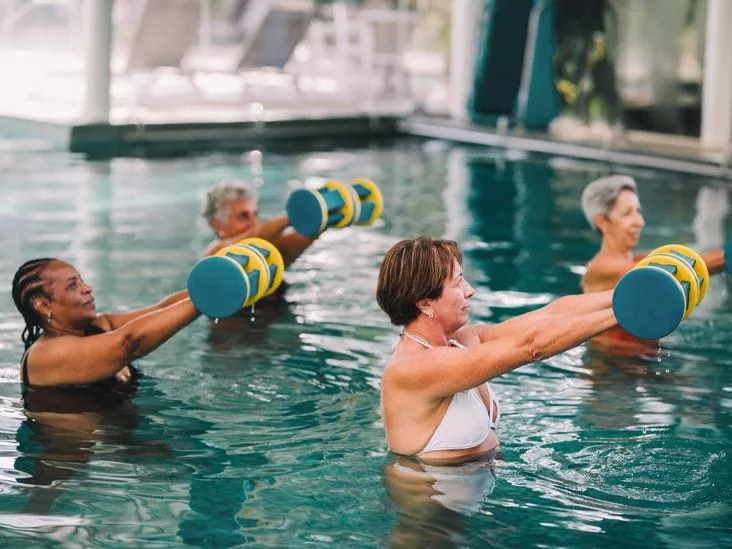



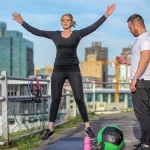

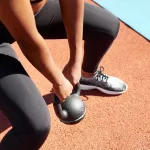





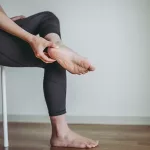
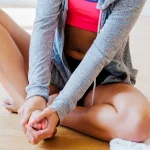
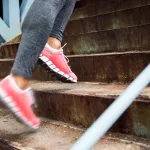


Leave a Reply
You must be logged in to post a comment.